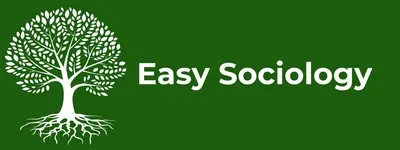Table of Contents
- Sociological Framework: Understanding Disability
- Themes and Contexts in “A Silent Voice”
- The Social Model of Disability in “A Silent Voice”
- Conclusion
“A Silent Voice” (Japanese: “Koe no Katachi”) offers a compelling narrative that explores complex themes such as disability, bullying, redemption, and reconciliation. This anime, centered on the lives of Shoko Nishimiya, a deaf girl, and Shoya Ishida, her former bully, provides a profound opportunity to analyze these themes through a sociological framework, particularly the sociology of disability. By examining the social interactions, structures, and stigmas presented in the story, we gain insight into how disability is socially constructed and how social inclusion or exclusion is shaped by cultural norms.
Sociological Framework: Understanding Disability
The sociology of disability focuses on how society shapes the experience of individuals with disabilities, often creating barriers to full participation in social life. Unlike the medical model, which views disability as a purely physical or biological issue, the sociological approach looks at disability as a socially constructed phenomenon. This involves the examination of societal structures, attitudes, and interactions that contribute to the marginalization or inclusion of disabled individuals. By applying this lens to “A Silent Voice,” we can better understand how societal perceptions of disability, especially deafness in this case, shape the experiences of both the disabled and those around them.
Themes and Contexts in “A Silent Voice”
Social Stigma and Bullying
One of the central themes in “A Silent Voice” is the social stigma attached to disability, which is most apparent in the bullying that Shoko experiences. From an early age, Shoko is marginalized and mistreated by her peers, including Shoya, due to her deafness. This mistreatment is not merely individual cruelty but is reflective of broader societal discomfort with difference. The stigma attached to disability often results from a lack of understanding and the perception that those with disabilities deviate from social norms. In this anime, the bullying Shoko faces serves as a metaphor for how society at large frequently ostracizes individuals who do not conform to expected standards of ability, perpetuating social exclusion.
Communication Barriers and Misunderstanding
Communication is a key theme in “A Silent Voice,” both in its literal sense (Shoko’s inability to hear) and its broader social implications. Shoko’s deafness creates communication barriers between her and her peers, which highlights the importance of accessible communication tools such as sign language. The lack of these tools in the school setting exacerbates her isolation and makes it difficult for her to form meaningful relationships. This speaks to a larger societal issue: the failure to provide accessible communication resources can lead to the disenfranchisement of individuals with disabilities. The anime shows that these barriers are not merely technical but are also deeply social, as they symbolize the exclusion of individuals from full participation in social life.
Redemption and Personal Growth
Shoya’s journey from bully to someone seeking redemption is a central narrative arc in the anime. His path can be understood through the lens of moral and social rehabilitation, a process that involves both individual transformation and the broader societal mechanisms that enable this change. In sociological terms, Shoya’s redemption is not just about seeking forgiveness from Shoko but also about renegotiating his place within the social structures that once facilitated his bullying. His personal growth, marked by his increasing awareness of the harm he caused and his attempts to make amends, mirrors the potential for broader societal changes in attitudes toward disability. Shoya’s transformation reflects the possibility of moving from prejudice and exclusion to empathy and inclusion, illustrating how societal norms can be challenged and reformed.
Empathy and Understanding Across Differences
A crucial theme in “A Silent Voice” is the development of empathy and understanding, particularly between Shoya and Shoko. As the film progresses, Shoya begins to see Shoko not simply as a “deaf girl” but as a complex individual with her own desires, struggles, and strengths. This shift in perspective aligns with the disability rights movement, which emphasizes the importance of recognizing the full humanity of disabled individuals rather than viewing them through a deficit model. Empathy, in this context, becomes a tool for breaking down the barriers that separate individuals and groups, fostering a more inclusive society. The film encourages viewers to consider how understanding and respect for diversity can replace pity or patronization, leading to more equitable social interactions.







